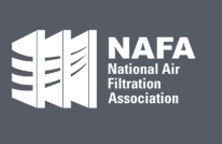How poor indoor air quality relates to “sick building syndrome”
The “sick building syndrome” (SBS) is a term coined to describe a condition where residents suffer from a wide range of undetermined health issues often associated with living in a building with poor indoor air quality.
The occupants may experience varied symptoms at one time or another:
- Generalized headache
- Vertigo
- Nausea
- Muscle fatigue
- Anxiety
- Recurring upper respiratory infection
- Skin rashes
- Asthma
In many cases, symptoms develop into a more serious secondary condition that may require hospitalization and prolonged medication. These symptoms often disappear when the person goes to another area in the building or go outdoors. Unexplained sickness is sometimes mistaken as paranormal experience or psychotic episodes especially when medical examinations cannot find any probable cause. The Facility Manager may call for a maintenance check if the problem escalates and occupants move out. Government agencies such as the Occupational Safety and Health Administration (OSHA) and the Environmental Protection Agency (EPA) may determine if the building is habitable or not.
The five most common issues found upon inspections are:
1. Insufficient ventilation. Many renovated old buildings do not have enough exhaust vents. Inexpensive living accommodations often do not follow structural standards to cut costs. If the building is overly populated, body odour will contribute to the poor indoor air quality.
If the structural design of the building is virtually impossible to install additional windows or exhaust vents, occupants must be conscious in maintaining cleanliness and improving air circulation by providing potted plants inside their homes.
2. Indoor chemical pollutants. Many contaminants found inside the building are unobtrusive, thus taken for granted. The adhesives used in carpeting and wallpaper emit low-level volatile organic compounds (VOC), so are cleaning agents, insect repellents, paint, turpentine, and varnish in wooden furniture. Gas emissions such as carbon monoxide and carbon dioxide from gas stoves, heaters, and wood burners are inhaled over long periods of time. Asbestos used as construction material may degrade over time and become a contaminant. It is not surprising if a member of the family develops chronic respiratory diseases.
Regular tests on indoor air quality and undertaking measures to improve it can greatly reduce the chances of developing SBS.
3. Outdoor pollutants. Pollution from the environment enters the building through the cracks on the walls, ac ducts, non-airtight windows and doors, and unclad ceiling. Radioactive gas such as Radon may contaminate the building through the cracks in the foundation.
Repair and maintenance of the building can reduce, if not eliminate the outside pollutants from reaching the living quarters. Outdoor cladding and insulation can immensely improve the living condition of the occupants.
4. Microbial pathogens. Moulds and mildew are two of the most common allergy-causing inhabitants in poorly maintained buildings. These spores grow in dark and moist hard-to-reach cervices like in air condition ducts, eaves, chimneys, under the sink, and behind cooking range burners.
5. Pest infestation. Pest droppings and dead bugs and rodents contribute to the decreased air quality inside the building. Uncontrolled infestation can exacerbate the pre-existing medical condition and may cause yet another health problem.
Environmental pollution is a given fact and it will take decades to reverse its negative effects. However, our homes and offices are safe havens where we spend long hours and we can do something to improve and maintain good indoor air quality. Let’s do our share, now!







